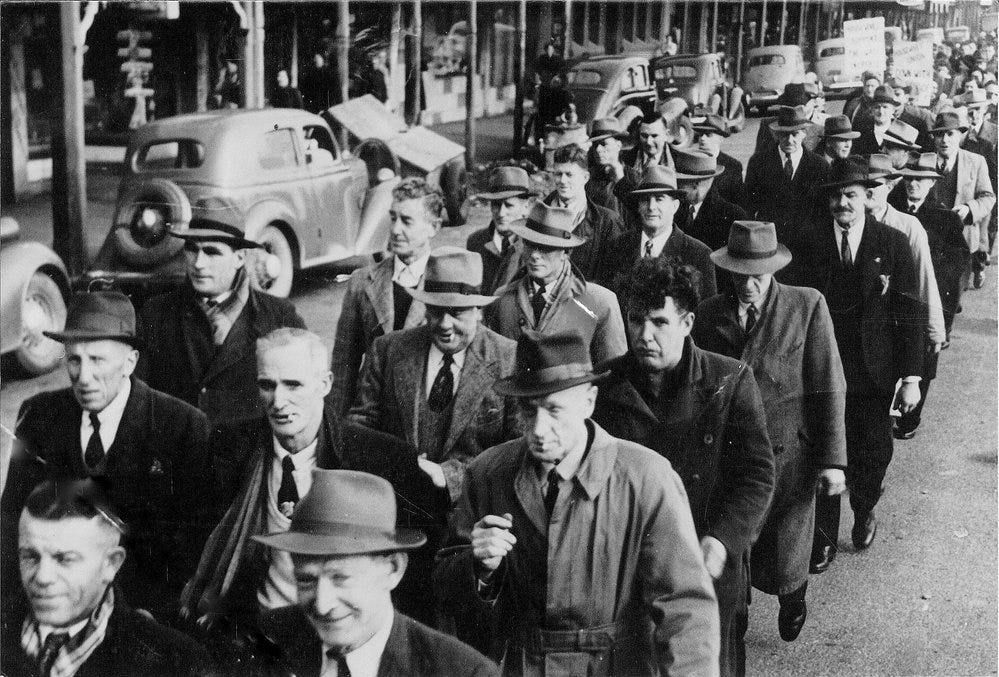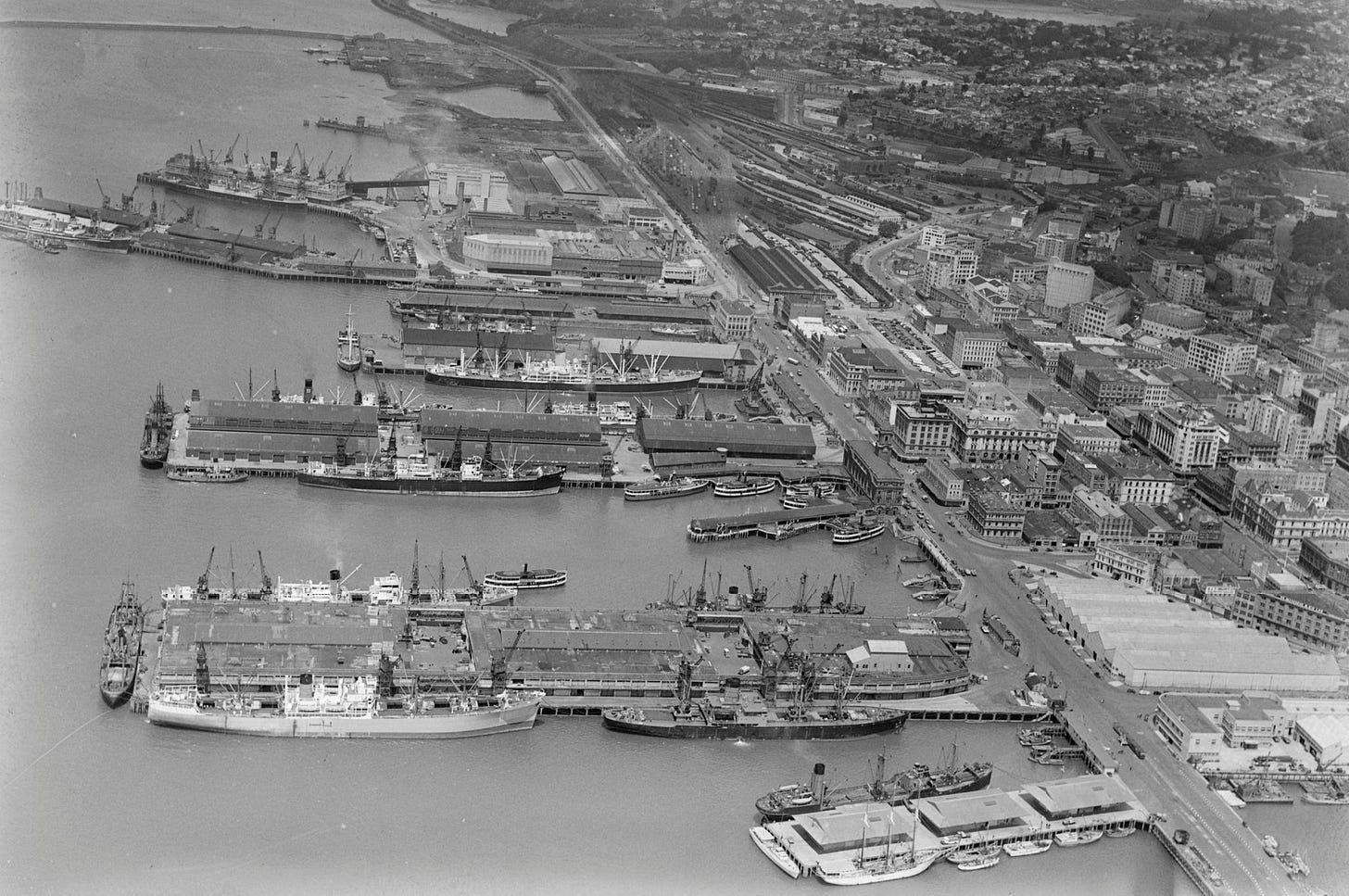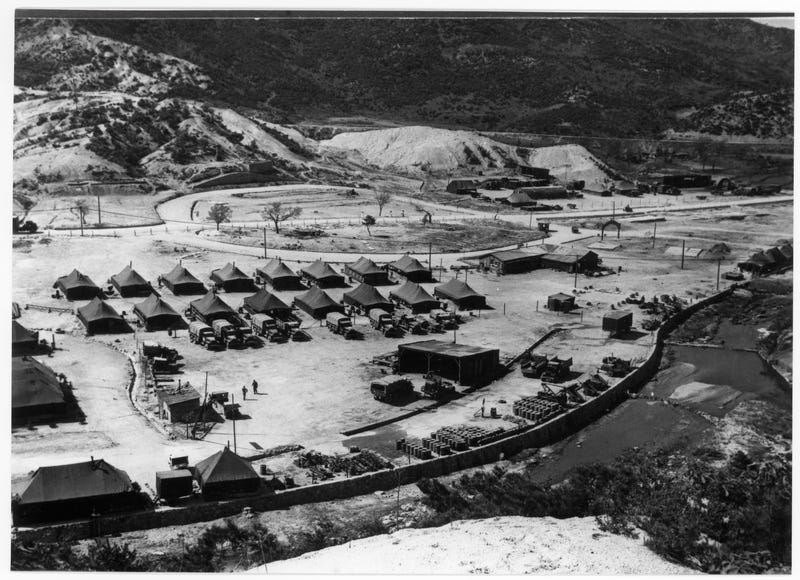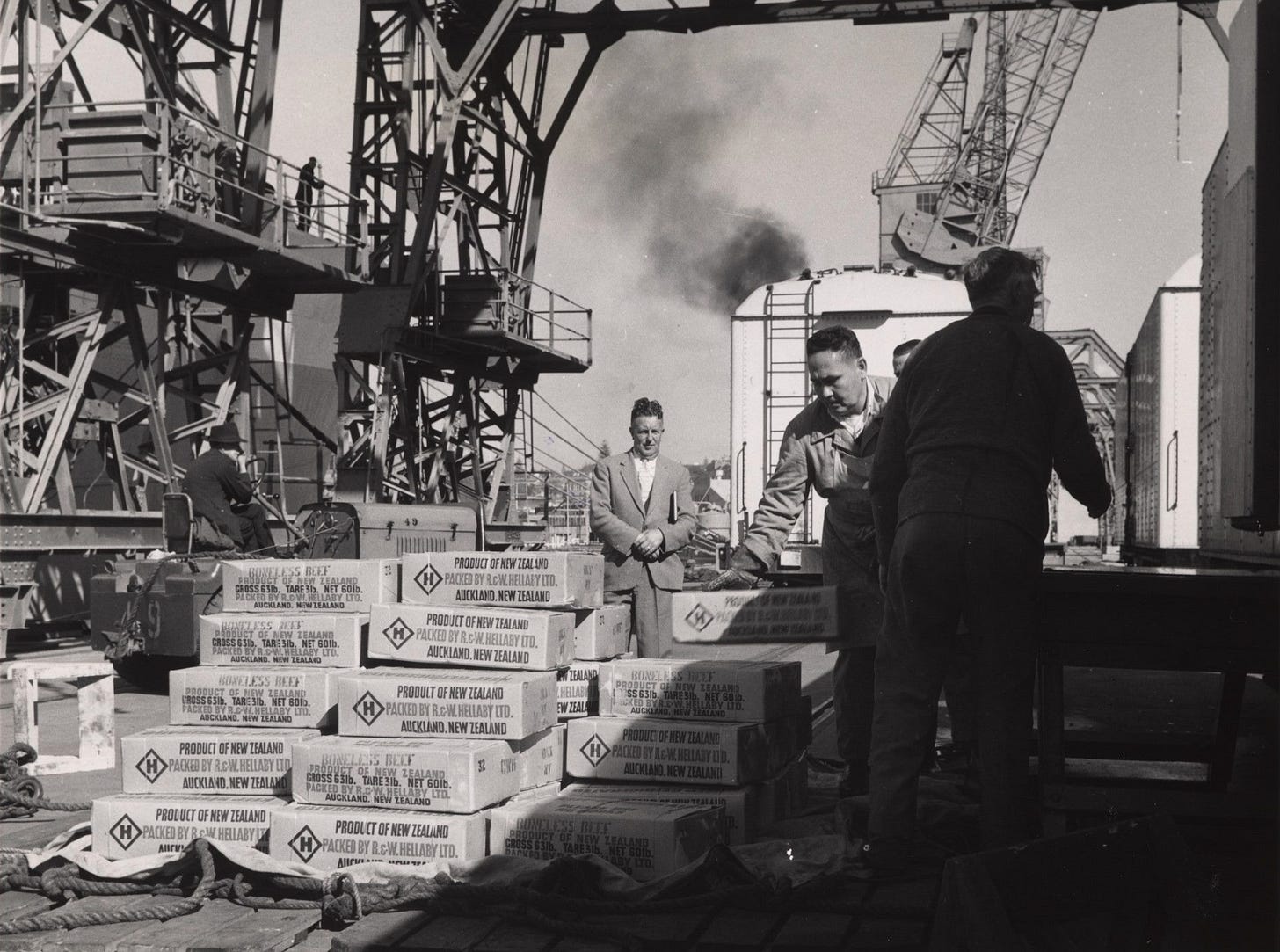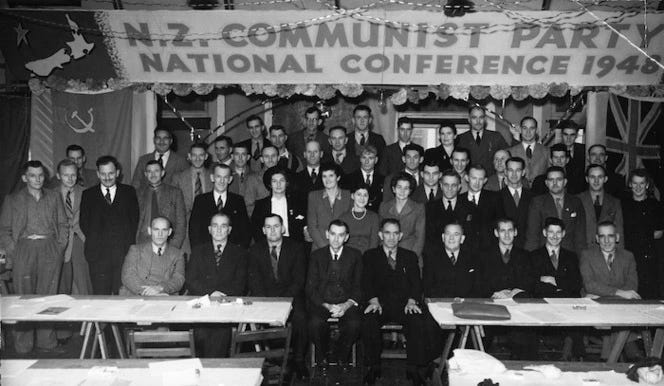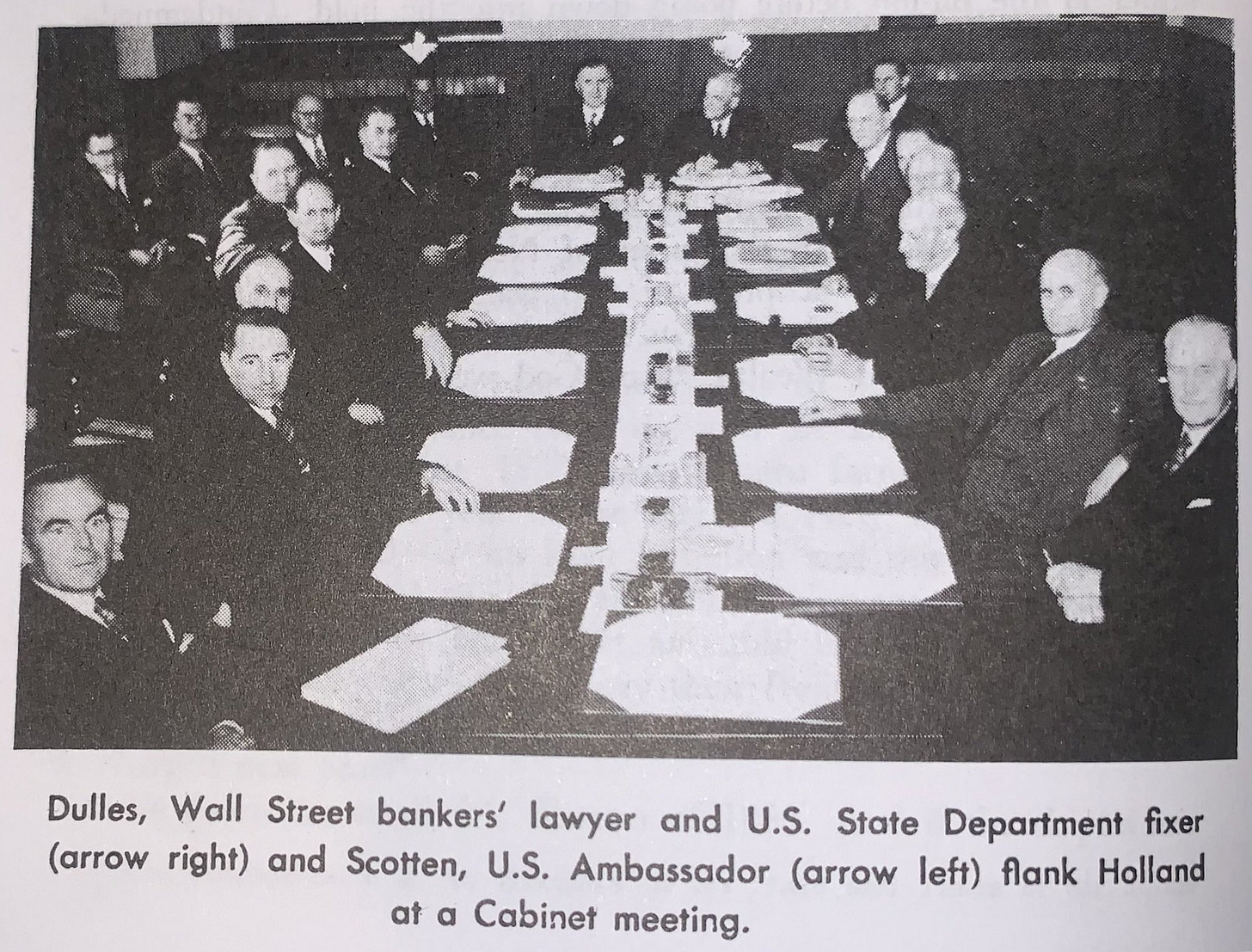The 1951 Waterfront Dispute - Part 1
New Zealand's biggest labour "showdown", and our ushering into the New American World Order
“With a Government backed to support 'America right or wrong' -- a Government openly riding on the chariot of Wall Street towards a third world blood bath -- the destruction of the Union was essential, for no Union anywhere had consistently fought for peace more than that of the waterside workers of New Zealand. The tragedy is what so few Unions did the same.”
- Jock Barnes, Waterside Workers’ Union president, 1952
Today, we'll be covering the prelude to the most impactful industrial action in New Zealand history: the 1951 waterfront lockout. As part of Exit From Affco's ongoing series on the New Zealand security state, and what it looks like when consolidating for conflict, 1951 marks New Zealand's induction into the post-WWII Western order. Not to say this process hasn't played out more than a few times. The 1912/13 strikes saw crackdowns against largely anti-conscription unions before WWI, repeated in more subtle ways by Labour before WWII. The post-9/11 Global War on Terror brought another wave of state repression, seen last time on Exit From Affco in the case of Rob Gilchrist. And now, the New Cold War being drawn up in the Asia-Pacific has brought the past two New Zealand governments even closer into the orbit of the increasingly fascistic American empire.
However, 1951 has been overlooked in the history of why we now find ourselves producing components for smart bombs used in Gaza. Like most of our labour history, it's something that's been left by the wayside. 8,000 Waterside Workers' Union (WWU) members were locked out from ports across the country for 151 days, from 13 February to 15 July 1951. At the height of the lockout, a further 22,000 workers struck in solidarity. Through a combination of backroom deals, emergency crackdowns, press smears, and union bashing, the first National government, the business elite, and moderate union leadership delivered the first nail in the coffin of militant labour in the post-war era. The WWU was torn limb from limb, key officials were banned from working in a port for decades, and sometimes left wrecked by the battle.
But even this story masks the geopolitical tensions and manoeuvring that occurred during those 151 days, forces that helped usher New Zealand into the post-war American order. Not that the New Zealand elite was hesitant in taking that step, but it's a fork in the road of what New Zealand could have been. It's one story in a global wave after WWII concluded, actions taken to ensure that the left could present no real resistance to the "celebration of markets" the Cold War would become. This series will tell an alternative history of the 1951 waterfront lockout, examining its role in the creation of the New Zealand security state, and the organised forces behind the scenes that spurred it on.
By 1951, the American empire was becoming acutely aware of how important the Asia-Pacific was to its post-war hegemony and, now paranoid of any movement that could kick off the Domino Effect, its related anti-communist crusade. 1951 marked 6 months of the Korean War, 2 years after the CPC had won in China, and 3 years since the Malayan Anti-British National Liberation War started. There'd been 6 years of Allied occupation in Japan, and by then the US had given $450m towards the First Indochina War. The Cold War had begun, and America began building up their westward flank in the same way NATO was doing in Europe.
New Zealand was also aware that America was quickly supplanting Britain as the dominant Western presence in the region, as a battered Albion was still rebuilding through the Marshall Plan and support from the colonies. Tens of thousands of American troops had rotated through New Zealand during the war, with military (and intelligence) ties deepening after fighting concluded.1 This accelerated when the first National government took office in 1949 under PM Sidney Holland. A report prepared for President Truman noted that compared to the previous Labour government, "the [National] government has maintained even closer relations with the US and has supported the US position ... with respect to the communist aggression."2 Holland announced at a London Commonwealth PM's conference in December 1950 that Britain and the colonies should
"offer the right hand of friendship and goodwill to Mr. Truman and his American people to whom the world owes so much ... that great country was giving assistance to the free world with unparalleled generosity... no wedge must come between us..."3
Holland added that "New Zealand would stick by [America] through thick and thin and through right and wrong." Compared to Michael Joseph Savage's declaration upon WWII's outbreak that "where [Britain] goes, we go, where she stands, we stand", it seemed the winds had changed in the Pacific. Holland flew off to Washington for a diplomatic visit after the London conference concluded, asking State Department officials upon his arrival "tell me what else I can do, and I will do it".4
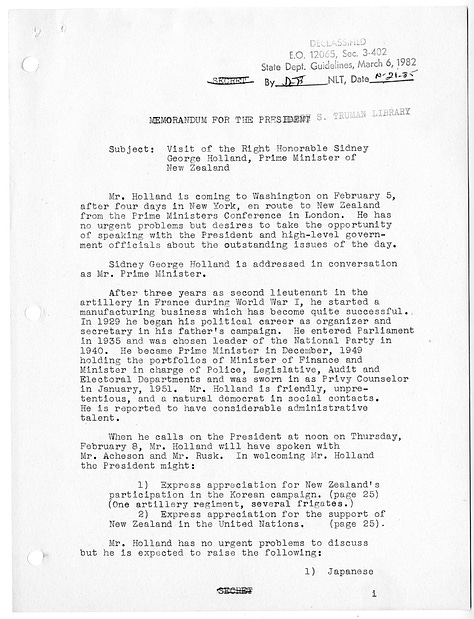
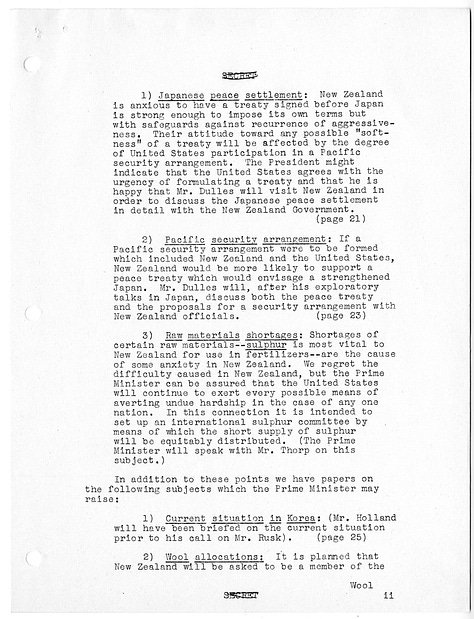


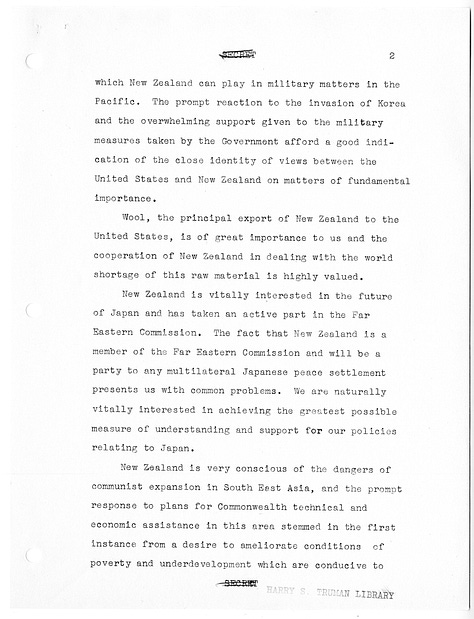
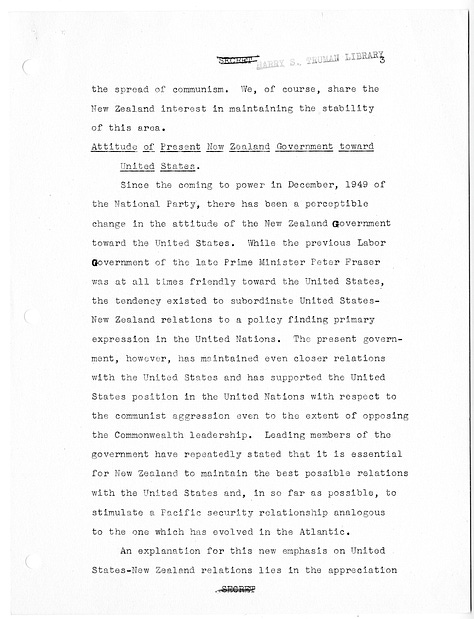
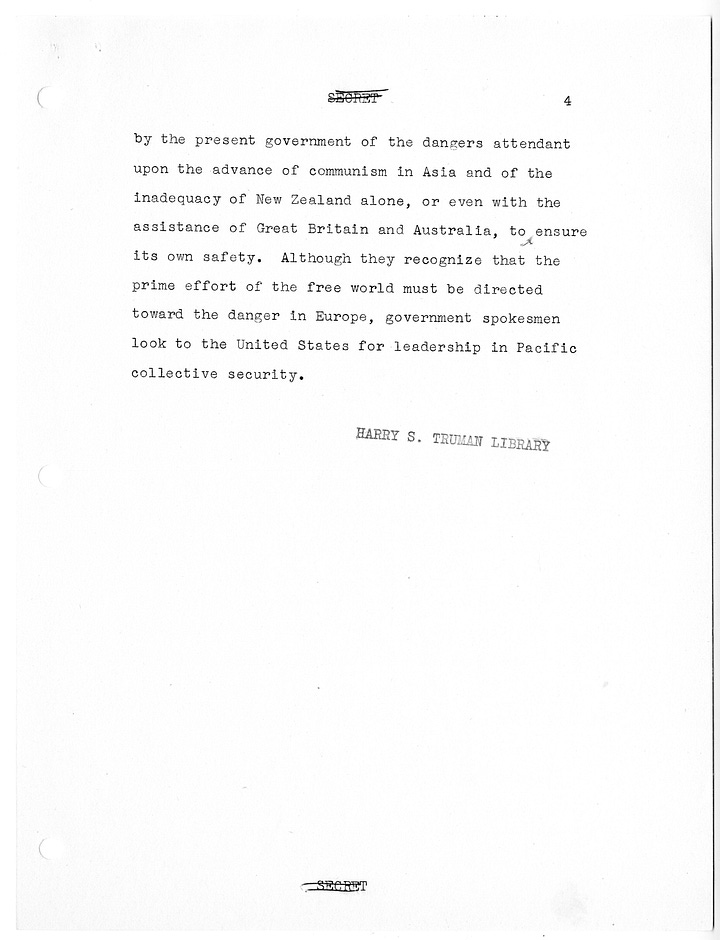
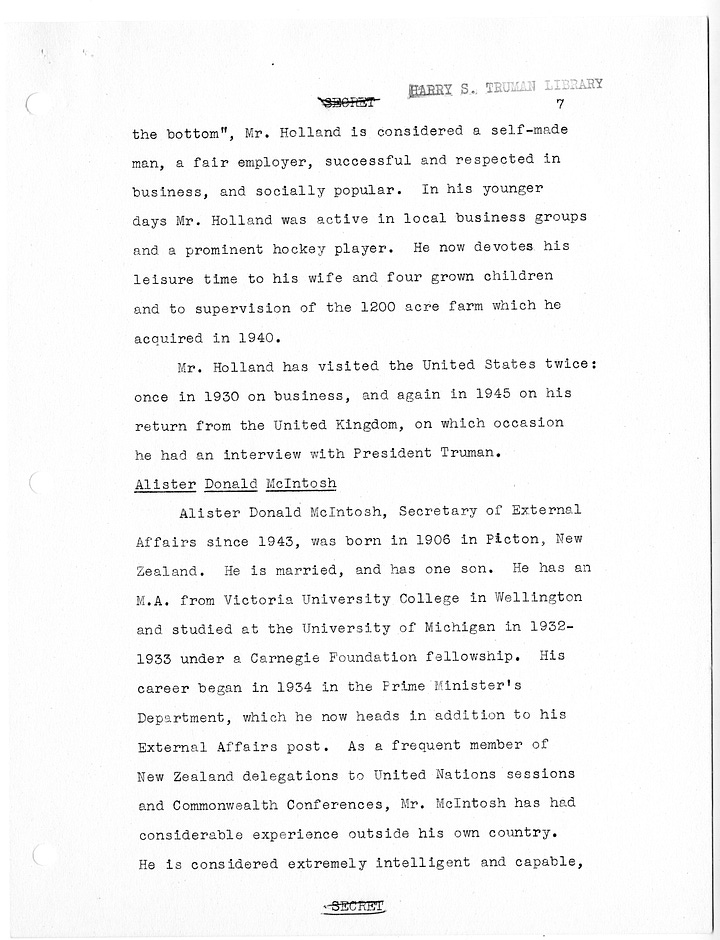
While Holland was in America, the New Zealand government invited John Foster Dulles to visit after his tour of Australia. Dulles was serving as the US Emissary to occupied Japan, and Truman's key State Department advisor on the Asia-Pacific. Australia and New Zealand’s requests for a security agreement were now being seriously considered following the start of the Korean War, as America realised it would need allies in the region to support its ambitions. J.F. Dulles was touring the Antipodes to work out the finer details.
The Dulles brothers, John and Allen, were American deep state creatures like no other. Both Princeton men, they cut their teeth in the 1920s at Sullivan & Cromwell, Wall Street's premier law firm, which pioneered tax dodge methods like the holding company and corporate mergers. During the interwar years, their work at Sullivan & Cromwell included managing American investment into Germany, with American dollars counting for 70% of what flowed into Germany during the 30s.5 This work continued during and after the war, with the firm helping Zyklon-B producer IG Farben survive through a labyrinth of shell companies.6 This cozy relationship between American finance, the Nazi state, and the US war machine birthed a child in the form of the CIA, the Allen Dulles-headed intelligence agency started in 1947.
Upon its formation, the CIA became one of America's main organs for ensuring their post-war hegemony remained unchallenged by neutralising any perceived threats to the free flow of capital and commodities. Outbreaks of post-war class struggle, like massive strikes in France in 1947 or resurgent communist movements across Europe, led the CIA to creating the Office of Policy Coordination, tasked with developing a "covert political action capability" including union infiltration.7 In coordination with the French Socialists in 1948, the agency paid to break up communist strikes in Marseille to ensure use of the ports for the Marshall Plan (and give the Corsican mafia a heroin market monopoly).8 The CIA funnelled $10-20m dollars into the 1948 Italian elections to defeat the Communist-Socialist bloc, and organised a letter writing campaign involving Frank Sinatra and Bing Crosby for Italian-Americans to warn their relatives about the dangers of communism.9 Wherever the CIA went, they established connections with local elites, and worked together to eradicate any threats to America's economic or political interests.
The CIA, run by Allen, and the State Department, with John Foster as a key official in the Asia-Pacific, were concerned with the New Zealand left. They were particularly focused on the Waterside Workers' Union (WWU), as "port security in Europe and the Pacific ... had become a major consideration of the US Government, with trade union militancy now regarded as a security risk."10 Current and future conflicts in the Asia-Pacific region could be easily jeopardised through political strikes, and New Zealand dockworkers had been one of the most militant blocks of organised labour for over 70 years. They'd held an anti-militarist stance since WWI, with the WWU voting to block shipment of troops or munitions to the "dirty war" in Malaya in June 1950.11 1,300 New Zealanders assisted Britain's "scorched earth" war against Malayan communist guerrillas, where part of the West's "counter-insurgency" arsenal was developed between 1948-1960. Dick Scott wrote in his history of the lockout, 151 Days, that
"[the watersiders] were politically awake and defence spending spelt war preparations to them, and a cannon mouth sitting at the family table in every workers' home. They knew that stolen bread was buying bullets to shoot Malayan workers and buying jellied petrol, atom bombs and bacteria to drench the world in new wars."12
The WWU was clear eyed about what lay ahead if New Zealand became intertwined with America's foreign policy goals. Consequently, they were designated a threat by the American state.
Intelligence gathering and active meddling in the union movement had been going on for years before J.F. Dulles stepped off the plane in February 1951. The embassy "had been despatching detailed reports on the WWU to Washington since 1948".13 A CIA report from 1949 titled "Communist Influence in New Zealand" wrote that Labour, National, and much of the establishment union leadership were already committed anti-communists, and that the Communist Party was somewhat declining. However, the report also wrote that
"control of important labor union posts in the Waterside Workers' Union, New Zealand Federation of Labour, and the trade union councils has given Communists greater influence than the Party membership indicates."14
It also makes note of the concentration of CPNZ members in "the ports of Auckland, Wellington and Christchurch", and that the WWU's national vice-president was an ex-CPNZ chairman. All throughout the document are references to ports. Ensuring that military infrastructure remained out of "militant" hands was a top priority, so they began pressing on fissures in the union movement to split the union movement.
A 1948 CIA report alleging that the internationalist World Federation of Trade Unions (WFTU) was a Soviet front caused substantial fracturing among the Western labour movement.15 America was trying to get unions to instead jump ship to their anti-communist and CIA-controlled International Confederation of Trade Unions. A 1949 memo details the US Embassy passing the NZ Federation of Labour Secretary-Treasurer a journal article based on that report, to "assist him" in "draft[ing] the required circular on ... the WFTU" and "present a strong case for disaffiliation".16
It's worth stressing that this was not solely a US effort. New Zealand politicians, media, business, and intelligence had long smeared the labour movement and Communist Party as being secretly directed by Moscow. Fighting alongside the USSR in WWII led to a reduction in anti-communist rhetoric and policy, but that uneasy alliance quickly came apart upon the war's end. Labour PM Fraser led a Stalinesque purge of card-carrying and "suspected" communists in the Public Service.17 A 1948 industrial dispute involving the communist-dominated Carpenters’ Union and the WWU led Minister of Public Works Bob Semple to publish Why I Fight Communism, pushed into wide circulation by Fraser.18 The NZ Federation of Labour (NZFOL) had replaced its more militant leadership with moderates in the same year. The first National government beat out Labour in 1949 partly due to its promises of delivering discipline to the union movement. Far from having to force the New Zealand establishment into a crackdown, the American empire instead found willing participants.
The new vice-president of the NZFOL was Fintan Patrick Walsh, a devout anti-communist and close ally of Fraser. Walsh, a former cofounder of the CPNZ, had spent 15 years as Labour's tool in the union movement, pushing it away from strikes and towards the industrial arbitration system. The American Embassy's first secretary described Walsh as a "firm friend of the United States", who regularly chatted with US officials about the Labour Party, the union movement, and suspected communists (or any "fellow travellers"), while knowing much of it would be passed to the CIA.19
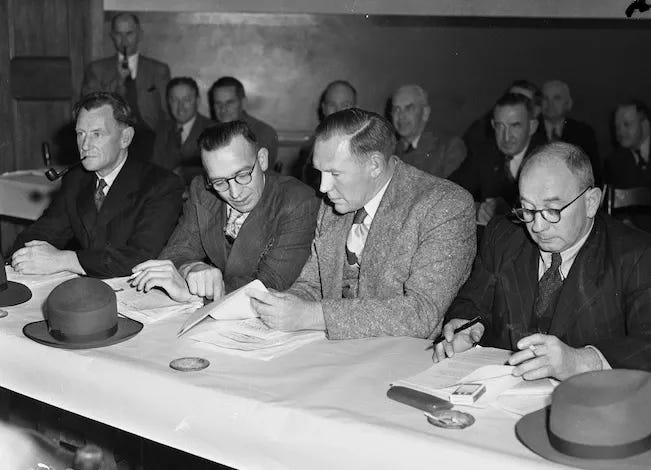
At the NZFOL conference later in 1949, a delegate vote to leave the WFTU passed. The WWU ignored the directive, and alongside a long-standing conflict with the FOL over direction, the WWU was unconstitutionally pushed out by FOL executives in 1950.20 This led to the WWU and other dissatisfied unions setting up the Trade Union Congress, their own competing national body which advocated for industrial action over the Court of Arbitration.
Alongside this split inside the union movement, an ongoing dispute between the WWU and shipowners had been continually escalating since the late 40s. Harsh conditions to keep up the war effort had persisted long after, including poor pay, lack of hazard protections, and gruelling overtime. A dispute over exposure to the industrial dye lampblack in mid-1950 led to a nationwide work stoppage, and the matter was quickly taken to the Court of Arbitration.21 However, the shipowners had no intention of reaching a settlement. They wanted a “showdown” with a union now isolated from the wider movement, under a new National government that had gotten into office on union-bashing, currently working out the details to New Zealand's induction into America's new global order.
If you enjoyed this article, sharing it (or visiting my Ko-fi) helps out.
The rest of this series will cover the dispute itself, the government's crackdown, the guidance and assistance given by foreign intelligence agencies (including the secret CIA flights), and the impact it had on our own security state. Subscribe to not miss the next one. Ka kite anō au i a koutou.
"As surely as night follows day, an offensive by the Holland Government against the workers of New Zealand was inevitable. And years of inspired press propaganda had made it clear that the New Zealand Waterside Workers' Union would be objective number one. Its record of progressive thought and militant policy, not only for its own members but for the working class as a whole, had made that certain.
“With a Government backed to support 'America right or wrong' -- a Government openly riding on the chariot of Wall Street towards a third world blood bath -- the destruction of the Union was essential, for no Union anywhere had consistently fought for peace more than that of the waterside workers of New Zealand. The tragedy is what so few Unions did the same. And this is a question that cannot be divorced from the ordinary daily bread and butter economics of a trade union. It is either guns or butter -- with the workers of all countries doing the dying in war and the paying before and afterwards." - Jock Barnes, leader of the Waterside Workers' Union, 1952
The Origins of Signals Intelligence in New Zealand - Nicky Hager, Centre for Peace Studies Working Paper No. 5
Report, Background Memoranda on the Visit to the United States of the Right Honorable Sidney George Holland, Prime Minister of New Zealand - Harry S. Truman Library, 31 January, 1951
151 Days - Dick Scott (p.15)
Scott (p.16)
Doing Business With Hitler - Dusty Sklar
The American Who Let The Nazis Rebuild Germany - Adam LeBor
The Politics of Heroin - Alfred W. McCoy (p.57)
McCoy (p.60)
US Covert Operations and Cold War Strategy: Truman, Secret Warfare and the CIA, 1945-53 - Sarah-Jane Corke (p.50)
Towards The Conception of the New Zealand Security Service - David Burke (p.6)
Scott (p.26)
Scott (p.26)
Burke (p.6)
Communist Influence in New Zealand - CIA Report, 30 June 1949
Burke (p.7)
Burke (p.7)
The Price of Collective Security: State-sponsored Anti-communism in New Zealand during the Cold War - Aaron Fox (p.8)
Fox (p.8)
Burke (p.7)
Scott (p.19)
Scott (p.27)


